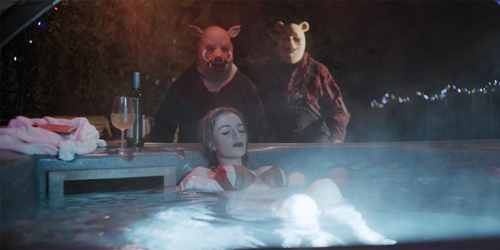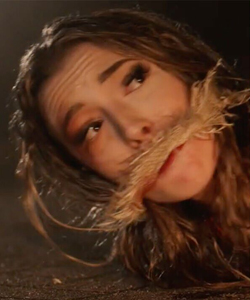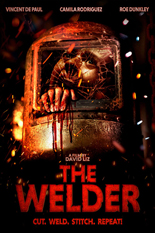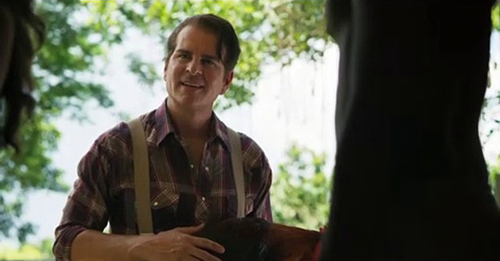
 Based on the late-1960s manga by Kazuo Umezu, Cat Eyed Boy is about a cat-eyed boy. (Let’s just call him “CEB” to make things easy and not spend all our hyphens in one review.) Resembling what I’d imagine the McDonald’s Hamburglar to spawn — but with short pants, tube socks and cleft lip — he lives in the rafters of an empty home in a village outside Tokyo.
Based on the late-1960s manga by Kazuo Umezu, Cat Eyed Boy is about a cat-eyed boy. (Let’s just call him “CEB” to make things easy and not spend all our hyphens in one review.) Resembling what I’d imagine the McDonald’s Hamburglar to spawn — but with short pants, tube socks and cleft lip — he lives in the rafters of an empty home in a village outside Tokyo.
As the shot-on-video movie opens, a family moves in and CEB slowly reveals his presence to the brother and sister. The precocious brother is cured of his asthma when CEB power-hocks a loogie straight from his sinuses into the back of the kid’s throat. The teenage sister’s hair-hidden, half-face birthmark peels off when CEB licks it with vigor and without consent. Lest you think this is all about his magic saliva, you’re wrong; CEB also urinates on the boy’s bullies.

Director Noboro Iguchi, he of such Japanese nonsense as Mutant Girls Squad and Zombie Ass: Toilet of the Dead, works in a story — kinda sorta — with the village terrorized by a trench-coated, bandage-wrapped Darkman-looking motherfucker and a bumpy meatball monster that’s a dead ringer for a type 2 on the Bristol stool scale.
Luckily, CEB’s spit bores holes … so I guess the movie is all about his magic saliva. Expectorate or no, Cat Eyed Boy is a missed opportunity. Umezu’s original stories — including “The Meatball Monster,” which this adapts — are a blast of gateway horror; what they aren’t, weirdo premise and all, is goofy comedy dependent on gross-out humor. That makes Iguchi the wrong type to faithfully bring CEB to the screen. Other than replicating the main character’s design, this translation doesn’t work. If it were on film, it might better sell the facade. However, the utter flatness and cheapness of video only heightens the fakery, making the entire thing look like a joke.
As of this typing, Cat Eyed Boy has no legitimate American release, but you can watch it on YouTube below. While no English subtitles exist, they’re not what you’d call necessary. —Rod Lott

 Contrary to popular belief, the worst type of movie isn’t a bad one; it’s a bad one that’s not any fun.
Contrary to popular belief, the worst type of movie isn’t a bad one; it’s a bad one that’s not any fun. 
 Between its kills are enough padding to generously stuff the fluff of the pillows of every orphanage, hospital and hostel within a 100-mile range. I get the curiosity factor; I, too, succumbed. But I implore you: Stick with the trailer. Life’s too short. So short I’ll tell you how the movie ends: Pooh repeatedly stabs Maria in the head; fade to credits; everyone is the audience is agog, like, “What? That’s the finish? Is a scene missing?”
Between its kills are enough padding to generously stuff the fluff of the pillows of every orphanage, hospital and hostel within a 100-mile range. I get the curiosity factor; I, too, succumbed. But I implore you: Stick with the trailer. Life’s too short. So short I’ll tell you how the movie ends: Pooh repeatedly stabs Maria in the head; fade to credits; everyone is the audience is agog, like, “What? That’s the finish? Is a scene missing?” In merging horror with racial politics, Florida-based filmmaker David Liz seems to draw inspiration from Jordan Peele’s
In merging horror with racial politics, Florida-based filmmaker David Liz seems to draw inspiration from Jordan Peele’s 

 After a woman is fatally shotgunned in her sleep, her belongings are dumped into a curbside cardboard box marked “Free to a Good Home.” Kameron and Scott Hale’s
After a woman is fatally shotgunned in her sleep, her belongings are dumped into a curbside cardboard box marked “Free to a Good Home.” Kameron and Scott Hale’s 